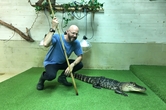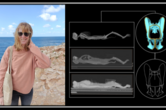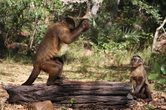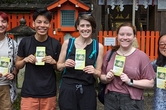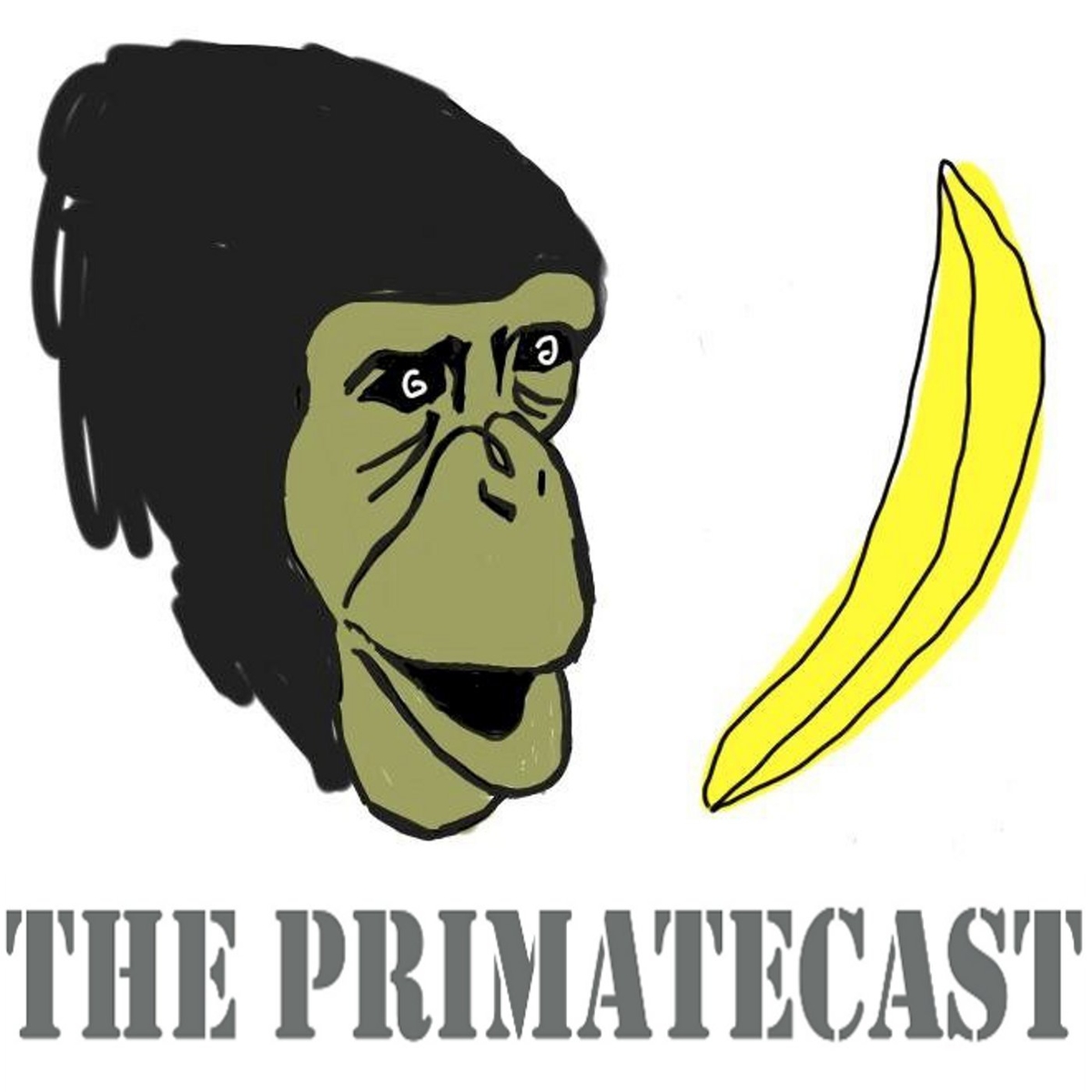Apes think, apes groom
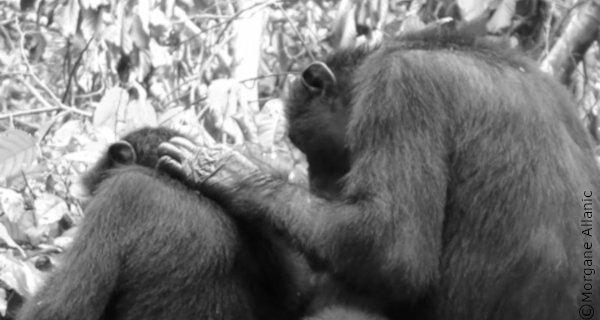
Dr. Morgane Allanic, who recently completed her doctoral program at PRI, studies how bonobos interact with one another to better understand the lives of our closest living relatives. Earlier this year, Morgane and her colleagues published papers (see here and here) that illuminated the complex evolution of social grooming in primates—and great apes in particular—based on extensive analyses of nearly 900 hours of video recordings. We asked her to tell us about her latest research and what it's like to follow groups of bonobos in the wild for months at a time.
CICASP: Why did you decide to study grooming behaviors, and why in bonobos and chimpanzees?
Allanic: Ever since I started my master’s program, my research interests have revolved around social interactions in great apes. Social grooming is the most prominent social behavior in both chimpanzees and bonobos. It plays an important role in maintaining and strengthening social relationships, promoting group cohesion and reducing tension between individuals. It also has an important hygiene function of removing ectoparasites and debris from the hair.
Even though chimpanzees and bonobos are genetically closely related, they exhibit major social differences, and this led me to wonder whether the differences and similarities in their sociality are reflected in their patterns of social grooming. Moreover, as they are the two closest living relatives to humans, they can be good comparative models to study the evolution of human language and society.
CICASP: You found that bonobo mothers in the wild groom their offspring differently from other individuals. Can you tell us more about it?
Allanic: I found that in the wild, bonobo mothers groom the backs of their offspring more intensively than when they groom other immature individuals, suggesting that mothers invest in their offspring more to prevent diseases linked to parasites such as fleas or ticks. In other words, young individuals rely on their mothers to remove those ectoparasites from the body areas that are inaccessible by self-grooming.
Adult and juvenile bonobos grooming in Wamba, DRC. [Photo credit: Morgane Allanic]
CICASP: How does captivity affect the grooming behaviors of bonobos in general?
Allanic: In my research, I found that both captive chimpanzees and captive bonobos groom the back areas and in face-to-back positions less frequently than individuals in the wild. One possible explanation is that there is less need for a hygiene function of social grooming in captive environments because of fewer parasites. Therefore, captive individuals groom the less accessible areas (to a self-grooming individual) less frequently than wild conspecifics. However, future studies should quantitively analyze ectoparasite removal in captive and wild populations to test this hypothesis because in captivity, parasites can also spread faster due to the close proximity and high density of their hosts.
CICASP: Are there functional equivalents of mutual grooming in humans?
Allanic: Social grooming in non-human primates is often considered as analogous to human conversation. Social grooming and human conversation share similarities in their turn-taking systems. In humans, speakers usually alternate their speeches and do not simultaneously talk since overlap is considered as a mistake, with one or both speakers stopping to talk. This turn-taking system is universally used across languages and cultures. However, simultaneous speech is frequently used in some hunter-gatherer societies such as that of the Baka Pygmy.
Similarly, non-human primates mainly exchange bouts of unidirectional grooming, but they can also simultaneously groom each other. This behavior—called mutual grooming—is reported to be rare or only occasional in many primate species, but is frequent in chimpanzees. Interestingly, I found this behavior to be rare in wild bonobos but frequent among captive ones. Further studies will have to be conducted to better understand the function of this behavior in great apes.
A bonobo mother grooming the back of her offspring in Wamba, DRC. [Photo credit: Morgane Allanic]
CICASP: You spent months following bonobos in forests in the Democratic Republic of Congo. Tell us what it was like.
Allanic: Fantastic. But not easy. Fieldwork in Wamba is challenging. You must leave the camp at 4:50 am, walk at least one hour to reach the bonobo morning nests, then walk all day, confront the rain, try to stabilize your video camera while getting bitten by flies, among so many other challenges... But then, bonobos decide to start a two-hour long grooming session on a fallen tree with an unobstructed view, and it gets magical. I feel extremely lucky to have been able to observe bonobos in their natural habitat.
CICASP: You are also dedicated to protecting wild habitats and have, for example, been engaged in drafting of nature conservation plans at UNESCO. How has your research shaped your views?
Allanic: In 2018, I worked six months for the UNESCO’s Man and the Biosphere Programme to develop a conservation plan for the Nimba Mountains Biosphere Reserve (NMBR) in Guinea aiming to protect and conserve the biodiversity, and to improve the living conditions of the local people at the same time.
The NMBR is the place where I conducted my fieldwork on the wild chimpanzees of Bossou for my doctorate. Bossou chimpanzees live in a human-dominated landscape, and are semi-isolated from neighboring communities with no females having ever transferred to the community in four decades. Today, the group is composed of only seven individuals. Moreover, during my time there, I could observe many events of crop-raiding performed by Bossou chimpanzees.
All of these events and observations really opened my eyes on the importance of having a peaceful human-wildlife coexistence and on the importance of promoting public education and awareness of the conservation of the biodiversity in order to protect and conserve the wildlife and the habitats.
CICASP: If you, as a scientist, have one message to the world right now, what is it?
Allanic: Get curious, never stop learning, do not be afraid of trying and failing but mostly do everything you can to protect and conserve the nature and biodiversity even if it is at a small scale.
Morgane at the top of Mount Nimba in Guinea
